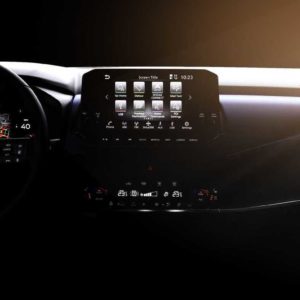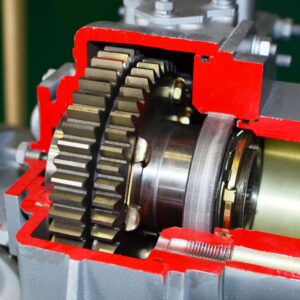In vehicles, it’s often the smallest parts that make a big difference. Bearings, radiator caps, and tiny sensors are some of the components that make it possible for your vehicle to perform, but they’re often overlooked.
For drivetrains and transmissions, even the smallest gears are crucial for efficient vehicle operation. Depending on the vehicle, a combination of gear types is necessary. These include spiral gears, worm gears, and hypoid gears.
While these gears generally serve the same purpose, one type stands out from the rest: hypoid gears, which are commonly used in four-wheel-drive and rear-wheel-drive vehicles. However, front-wheel-drive vehicles won’t have hypoid gears if the engine is mounted east-west (sideways). The transaxles on these vehicles use helical cut gears.
What Is a Hypoid Gear?
A hypoid gear is a type of spiral bevel gear that transfers power and distributes torque. In a hypoid gear set, the pinion enters the ring gear circle either above or below the center line.
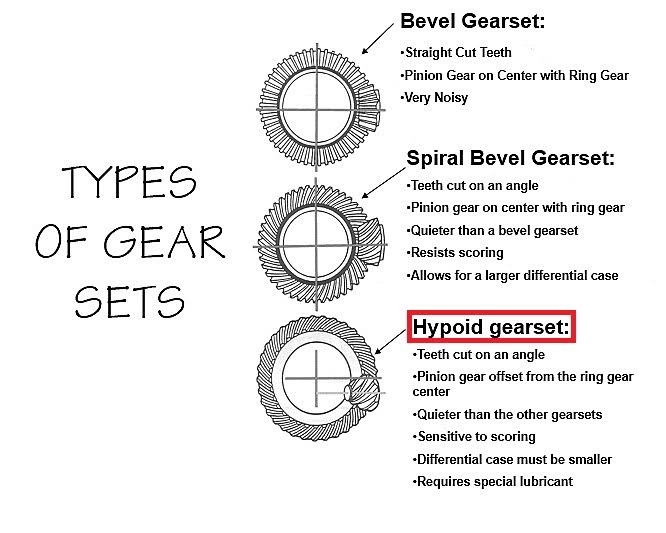
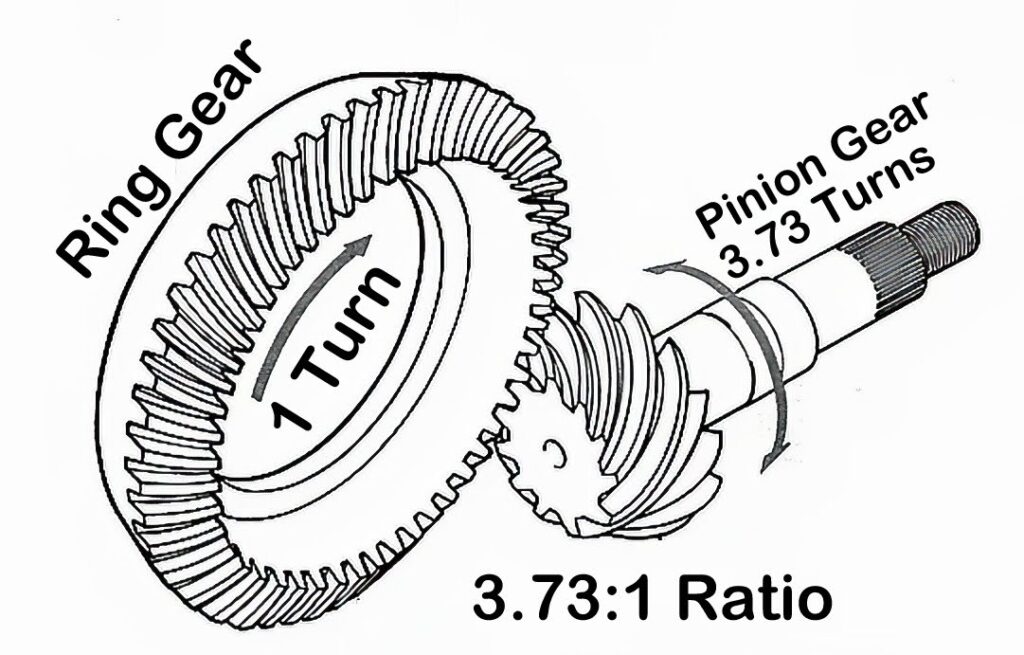
Hypoid gears are commonly installed as the final drive gears in rear axles that are intended for maximum load-carrying capabilities and require low-noise features.
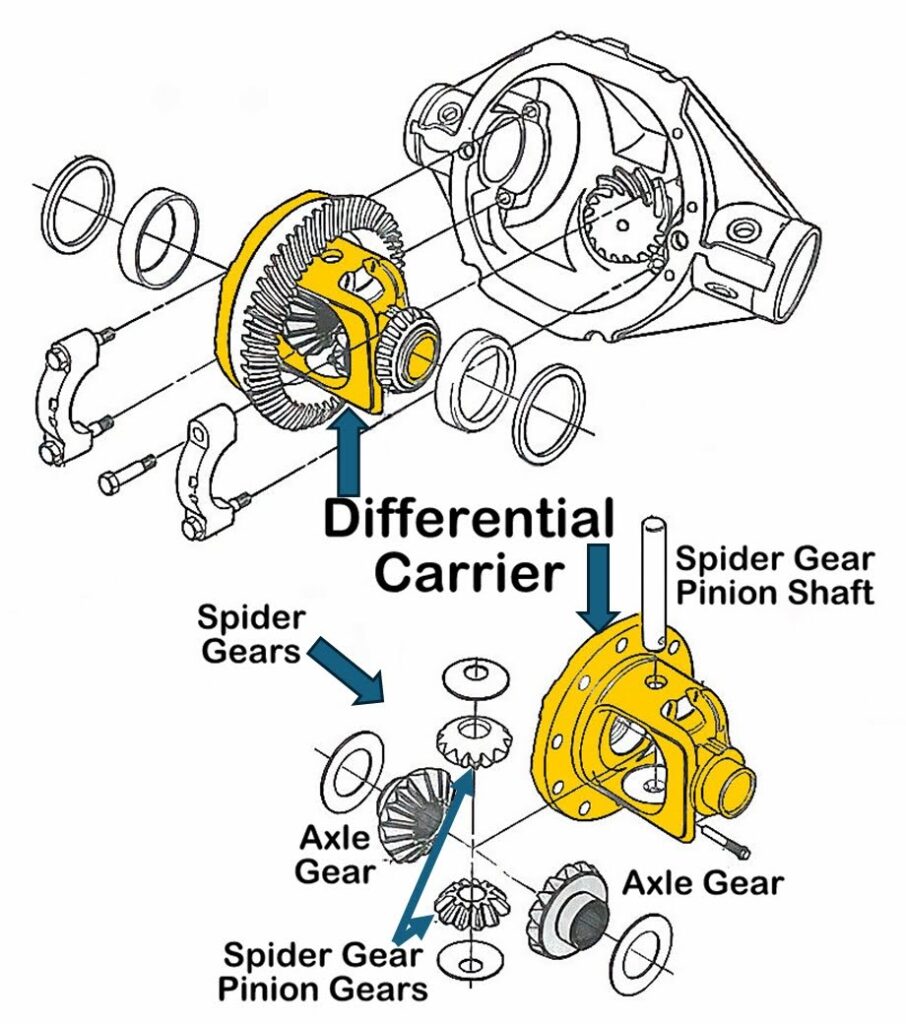
Design
A typical hypoid gear has curved teeth that resemble a regular spiral bevel gear.
In this hypoid type of gear set, the axes of two gears don’t intersect. The pinion gear is offset below the center line and ring gear, which results in maximum gear tooth contact, gradual tooth engagement, and quiet operation.
Because of the offset pinion, the driveshaft can also sit in a lower-than-normal position, reducing the size of the hump in the vehicle’s interior.
A hypoid gearbox has a pinion with a larger spiral angle than the actual gear, making its pinion diameter greater than that of a bevel gear pinion.
The greater contact area in a hypoid gear also makes it possible to transfer more torque while using higher gear ratios.
It’s also important to note that the difference in the spiral angles between the pinion and crown creates a sliding motion along the gear teeth that can produce smooth running properties and low-noise operation.
In a hypoid gearbox, the input and output shafts can also rotate in similar and opposite directions.
Application
Hypoid gears are generally used for high-speed applications, such as vehicles reaching speeds of over 1000 revolutions per minute (rpm).
These gears are also ideal for low-speed applications, especially for conditions that require smooth operation.
Hypoid gears are typically found in rear axles, creating a below-center offset that puts the driveshaft in a lower-than-normal position.
Vehicles that require higher gear ratios have hypoid gears that are combined with a planetary gearing arrangement.
Because hypoid gearboxes receive high torque output, they operate with relatively high losses.
This is one of the reasons why hypoid gears are often a part of multi-stage gearboxes. In these setups, hypoid gears serve as an output stage where speeds are lower and torque outputs are higher.
Operation
Whenever a vehicle turns, the outside wheel must always travel at a greater distance than the inside wheel.
In a vehicle with hypoid gears, the driveshaft transfers torque to the drive pinion gear that meshes below the center line of a ring gear.
The ring gear is then connected to the differential carrier, which distributes torque evenly to two output shafts connected to the wheels.
Lubrication
Hypoid gears have specific maintenance needs to ensure their optimal operation. Proper lubrication is a must to make the most out of their service life. This guide will help you take care of them the right way.
Here are the different types of gear lubes (GL) you’ll need to keep your gears in shape.
GL-1 – straight mineral oil
GL-2 – worm gear lubricant
GL-3 – mild EP lubricant (not suitable for hypoid gears)
GL-4 – mild EP lubricant (suitable for manual transmissions or transaxles)
GL-5 – EP lubricant for hypoid gears
Note: Gear lubes are specified by the American Petroleum Institute (API).
Keep in mind that EP additives contain sulfurized esters and organic sulfur phosphorus compounds. Always wear protective gloves and wash your hands when dealing with such chemicals.

Advantages of Hypoid Gears
Here are some of the most notable advantages of hypoid gears.
High Torque Transmission
The axis offset in hypoid gears helps increase gear teeth contact, which results in a higher torque output than spiral gears.
The high torque transmission in hypoid gears makes them ideal for vehicles like trucks and high-performance cars.
Efficient Drivetrain Layout
The presence of hypoid gears puts the driveshaft and differential housing at a lower position, creating more ground clearance in comparison to vehicles without hypoid gears.
Hypoid gears are also necessary for vehicles with rear-wheel drive (RWD) and all-wheel drive (AWD) configurations.
Better Towing and Payload Capacity
Because hypoid gears can generate high torque transmission without any issues, vehicles can accommodate that extra load on their truck bed or trunk.
Improved Vehicle Performance and Comfort
The lowered drivetrain in vehicles with hypoid gears results in a lower center of gravity, improving handling and stability.
Hypoid gears also play a crucial role in reducing energy losses, which can improve a vehicle’s fuel efficiency.
Compatibility with Hollow Shafts
The large diameter of hypoid gears makes them compatible with hollow shafts. Hypoid gearboxes are also capable of splitting torque between two output shafts.
Key Takeaways
Hypoid gears transfer power and distribute torque. Unlike other types, a hypoid gear is designed to have an offset axis, increasing gear tooth contact.
All differentials use hypoid gear sets. These gears are best used for high-speed operations, particularly in conditions where a vehicle reaches a speed of 1000 rpm or higher.
Quiet operation, increased towing and payload capacity, and efficient drivetrain layout are some of the notable advantages hypoid gears have over other gear types and designs.
Find the Right Gear Oil For Your Car
Hypoid gears require GL5-grade gear oil that can handle their high performance. If you use the wrong grade of lubricant, you can end up with differential issues that may require costly repair and replacement. Fortunately, you can easily find the right gear oil that hypoid gears need at CarParts.com.
CarParts.com is your one-stop shop for replacement parts, accessories, tools, and other automotive products, such as gear oils. We offer a selection of lubricants, including GL5-grade gear oils that can grease and cool hypoid gears. Exclusively sourced from trusted manufacturers, our products will perform as promised, assuring you of satisfaction and peace of mind. If you have any questions about our gear oil products, such as their suitability to your vehicle and pricing, our customer service team is available 24/7 to assist you.
So, what are you waiting for? Order new gear oil from CarParts.com and enjoy the convenience of having it delivered to your doorstep.
Any information provided on this Website is for informational purposes only and is not intended to replace consultation with a professional mechanic. The accuracy and timeliness of the information may change from the time of publication.






